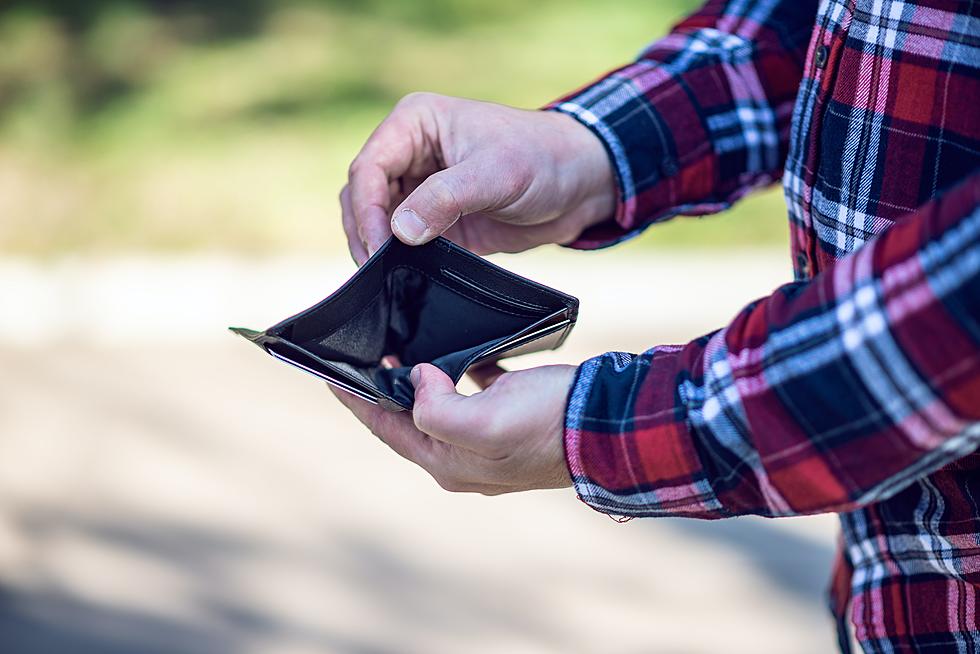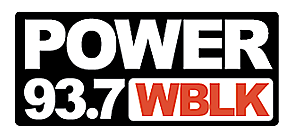
Money Minute: Tips for Filing your Taxes
It's tax season!! Yasmin Young talks with Kawanza Humphrey, VP of KeyBank, to get tips on filing your taxes!
Tips for Filing your Taxes
Deciding How to File Your Taxes
Online DIY Preparation
• Nearly 53 million Americans self-prepared and filed their tax returns online in 2016, according to the Internal Revenue Service (IRS).• Pros:
o Easy to Use: Tax software programs walk you through the process by asking you questions to determine your tax refund (or payment) based on the answers you input. Which program makes sense for you? The Balance has rated the 7 Best Tax Software Programs to Use in 2017.
o You Set the Pace: You can take your time and prepare your taxes at home. If you forget something, you can simply log back on. You don't have to drive back to your tax accountant's office.
o It's Inexpensive: Depending on which tax software you decide to go with, the price can range from free to $70.• Cons:
o You're Not a Tax Professional: Tax programs rely on you knowing which receipts to gather and it's possible you might enter information incorrectly or miss out on qualified deductions and credits.
o No advice: Tax software can't advise you on how to maximize your tax return for the following year.• Questions to Ask:
o How comfortable am I with using tax software?
o If I decide to do them myself, will I get them done on time, or will I miss the deadline and risk a penalty?
o Hiring a Tax Professional
o About 60 percent of taxpayers use the services of tax professionals to prepare their returns, according to the IRS.• Pros:
o Guidance: A tax professional will review all of your financial documents and ask for any relevant data, forms and receipts to help maximize your return.
o Representation: Licensed tax professionals can represent you before the IRS.
o They're Trained: Tax professionals know the ins and outs of the tax code. They can help you maximize your refund by noticing deductions you may have missed on tax software programs.
o Tax Deduction: For your tax return, you can still deduct the cost of hiring a tax professional to prepare your taxes.• Cons
o Cost: Hiring a professional costs at least three times more than the most expensive tax software program — $273 on average for a 1040 with Schedule A and State Return, according to the National Society of Accountants (NSA).
o Time: At a minimum, you'll meet with a tax professional twice — once to submit all of your tax documents and financial information, and a second time to review and sign the tax return when they are done.
o The Potential for Fraud: Most tax professionals provide honest service. However, each year return preparer fraud is on the IRS' "Dirty Dozen" List of Tax Scams. To avoid being scammed, follow the IRS' tips in Things to Remember When Choosing a Tax Preparer.• Questions to Ask:
o The NSA offers a comprehensive list of questions to ask a prospective tax preparer.
o It is important to note that any tax professional who files more than 11 tax returns in one year must e-file all tax client tax returns. So, whether you prepare your taxes online yourself or have a professional do them, your tax return will most likely be e-filed. And that's a good thing! According to the IRS, when you e-file, you can expect to receive a refund within three weeks — or faster if you elect direct deposit into your checking or savings account — versus six to eight weeks to process a paper form of your tax return.
o Regardless of who prepares your tax return, you are legally responsible for the information on your return. So make sure it's done right the first time.
Disclosures
This information and recommendations contained herein is compiled from sources deemed reliable, but is not represented to be accurate or complete. In providing this information, neither KeyBank, nor its affiliates are acting as your agent or is offering any tax, accounting, or legal advice.Additional online resources from KeyBank:
(This material is presented for informational purposes only and should not be construed as individual tax or financial advice. Please consult with legal, tax and/or financial advisors. KeyBank does not provide legal advice. KeyCorp 2017. KeyBank member FDIC.)
How to Manage Your Retirement when You Switch Jobs
What to Do With Retirement Account When You Switch Jobs
• Did you know that you can expect to change jobs four times by the time you reach 32? That’s what career networking site LinkedIn found when it surveyed its users. And if you’re already in your 30s, you likely changed jobs at least twice in your first 10 years out of college.
• With all these new jobs, you’ve probably found yourself wondering: “Should I roll over my 401(k)?” Here are some ideas about what you might want to do with the funds in your old company’s retirement plan.• Understand What You Can Do With Your Old 401(k)
• First, take a step back and review your options. There are four things you can do with your 401(k) through a previous employer:
o Leave the money where it is
o Roll over your old 401(k) into your new employer’s plan
o Roll over your 401(k) into an individual retirement account (IRA)
o Cash out• There’s a chance that option one isn’t on the table. Typically, you must have a balance of more than $5,000 to leave money in your old plan. And if you leave 401(k) funds with your old employer, it might be easy to lose track since you can’t actively use or contribute to the account.
• Cashing out your 401(k) is not the right move for most people, either. For one, cashing out triggers a big tax penalty you’ll have to pay the next time you file your taxes. It also means dismantling part of your all-important nest egg.
• So the best option is usually to roll over your 401(k). The harder question to answer is whether you should roll over your 401(k) into your new employer’s plan or into an IRA.
• Should I Roll Over My 401(k) to My New Employer?
o First, verify that your new employer has a 401(k) plan. Certain employers may not offer a retirement plan at all or they may offer a 401(k) alternative plan, such as a 403(b) or SIMPLE IRA. Also, know if your employer offers contribution matching.
o If you think it’s important to keep your financial situation simple, rolling over your old 401(k) into your new employer’s plan might be a smart move. By doing so, you consolidate your accounts and keep your retirement money in one place.
o While this is a good option for many people, there are still some downsides. You may not like the fund selection in your new employer’s plan, for example, or the fees might be too high. You’ll also miss out on some of the hidden perks of IRAs. For example, in certain circumstances, Roth IRA funds can be used to help you purchase a house. Whenever you make a major financial move, it’s worth it to fully investigate all options and potential complications.• Should I Roll Over My 401(k) to an IRA?
o This option provides you with more choice in how you use your retirement money, as you can choose to open an IRA with any financial institution and invest your money as you wish. It also means that you can name someone other than your spouse as the account’s beneficiary, whereas, by law, 401(k) beneficiaries must be spouses, if applicable — or your spouse needs to sign a waiver before you can name someone else as the account’s beneficiary. This option can also mean dealing with a lot more responsibility, though, since it’s completely up to you to invest and manage your nest egg when you go this route.
o Read up on the differences between a traditional IRA and a Roth IRA. You may be able to choose whichever one you prefer when you initiate your rollover. If you convert your 401(k) funds to a Roth IRA, you will have to pay taxes on the converted amount. Depending on how much money you have in your 401(k), you could end up with a hefty tax bill.• Getting Started
o The easiest way to initiate a rollover into a new 401(k) is to work through the process with your new employer. Or, if you choose to roll over to an IRA, you can initiate that process with your financial institution. These are known as direct transfers. The companies involved can handle the rollover for you, which means you won’t need to deal with the funds yourself. Many times, this is a safer, more convenient option that requires little action on your part. On the other hand, with an indirect transfer, you get a check and then have to invest it within a certain timeframe. If you mishandle this or wait too long, you could accidentally trigger a tax penalty. So generally, it’s best to go with a direct transfer.• Whatever you choose, be sure to keep your financial future in mind and meet with your financial advisor to see how this works into your overall retirement strategy. It’s important to make the most of the good savings work you’ve done already.
Additional online resources from KeyBank:
(This material is presented for informational purposes only and should not be construed as individual tax or financial advice. Please consult with legal, tax and/or financial advisors. KeyBank does not provide legal advice. KeyCorp 2017. KeyBank member FDIC.)
Save Money with Fee-Free Checking
KeyBank Hassle-Free Account
- The KeyBank Hassle-Free Account was designed to put you in control of your finances. It's a free checkless account that provides you immediate and convenient access to your money – without the hassle of writing checks.
KeyBank Hassle-Free Account Details
- No Monthly Maintenance Service Charge and no minimum balances
- No overdraft fees. No bounced checks – there are no paper checks on this account
- Provides unlimited access to free digital banking including online and
- mobile banking and bill payment.
- Free monthly statements (paper or online)
- Once enrolled, our enhanced KeyBank Relationship Rewards® program allows you to earn rewards just by actively using your Hassle-Free Account, debit card or by expanding your banking relationship with Key.
Additional online resources from KeyBank:
(This material is presented for informational purposes only and should not be construed as individual tax or financial advice. Please consult with legal, tax and/or financial advisors. KeyBank does not provide legal advice. KeyCorp 2017. KeyBank member FDIC.)
How to use Your Extra Money from Tax Reform
Tax Impact – Take Home Pay
• Starting in February, approximately 90 percent of US workers will see a slight increase in their take home pay, courtesy tax reform that reduces personal tax rates as much as 3 percent. (Source: US Treasury)
• Granted, those new tax rates won’t result in significantly larger paychecks. But at KeyBank, we believe small steps can pave the way to turning big dreams into reality.
• KeyBank recommends the following steps that can help you make the most of extra income coming your way due to tax reform:
o Emergency savings falling short? You’re not alone. According to Bankrate.com’s most recent Financial Security Index Survey, only 39 percent of Americans would have enough emergency savings to cover an unexpected $1,000 expense. We recommend emergency savings of at least three months take home pay.
o Use direct deposit to automatically allocate your increased income to build emergency savings. And talk to your banker about savings account options to be sure you are making the most of your savings opportunities.
o Keep on spending less than you earn. In other words, don’t use that extra income as a reason to spend more.
o On target to max out your 401K? Great news! Talk to your banker about establishing an IRA or other additional retirement account. Again, your increased income might not mean thousands more dollars, but small, regular contributions will add up
o Roll that extra income into your regular payment on high-interest credit cards. In addition to paying down a balance and saving on current interest, you can head off the impact of interest rate increases that might happen later this year.Additional online resources from KeyBank:
(This material is presented for informational purposes only and should not be construed as individual tax or financial advice. Please consult with legal, tax and/or financial advisors. KeyBank does not provide legal advice. KeyCorp 2017. KeyBank member FDIC.)
Carrying Bigger Bills to Save Money
Why Carrying Bigger Bills Will Help You Save
• The temptation to spend your hard-earned cash is everywhere, from clearance sales and alerts for megadeals in your inbox to promotions at the trendiest restaurants in town. So how can you stick to your budget?• It turns out that carrying around bills in large denominations can help you spend less.
• A study in the Journal of Consumer Research revealed that the size of your bills influences how inclined you are to spend them. The smaller the denomination, the more likely you'll be to spend the bill. For instance, you're more likely to spend 20 $1 bills than break a single $20 bill.
• Why is that? Well, it could be that we tend to view larger bills as more valuable and thus are more careful with how we spend them. Conversely, we think of smaller bills as less valuable and part with them more freely. It's far easier to part with a $5 dollar bill than with a $20.
• The same goes when you're making a purchase. You're more likely to buy 10 items that each cost $1 than a single item that costs $10, even though you end up spending the same amount of money. And that's why it's so easy to shell out far more money than you wanted to when buying lower-cost items, a phenomenon called nickel-and-diming.
• This happens partly because of mental accounting, where we irrationally separate our money based on criteria such as where it came from and how we plan on using it. So while larger bills may be designated for special purchases, the same amount in smaller bills may be easily spent on frivolous things.
(This material is presented for informational purposes only and should not be construed as individual tax or financial advice. Please consult with legal, tax and/or financial advisors. KeyBank does not provide legal advice. KeyCorp 2017. KeyBank member FDIC.)
Tips to Save Money On Grocery Shopping
Grocery Shopping on a Budget
• No matter what's on your list, grocery shopping on a budget is hard to do. But with a little planning ahead and creative thinking, you can stretch your food budget farther than you ever imagined. Here are ideas to get you started.• Let's start from the start: Going grocery shopping on a budget means creating a budget in the first place. To know how much you should spend on groceries, note your monthly income on a spreadsheet and subtract recurring expenses. Save receipts over time and note how much you're spending. Decide on a reasonable percentage for groceries and stick to it.
• Make Food Last Longer
o CNBC reports that the average American family throws away around $2,000 worth of food each year. Make your groceries last longer so you don't have to throw away spoiled food. Separate produce and meat in your fridge so they don't spread bacteria to each other. Poking holes in plastic bags will air out fruit and vegetables and make them last longer. And wrapping greens like lettuce in foil before refrigerating keeps them fresh longer, according to Self.• Bulk Up on Staples
o Stock up on large packages of nonperishables, and buy in quantity when you spot a sale. Rice, pasta, oats and lentils won't go bad on you, and neither will canned tuna and beans. You can use these staples in many cost-saving recipes. Some grocery stores also allow you to buy ahead on baked goods. If you're planning a large gathering, ask your store's bakery if you can purchase that big cake or platter when it's on sale. Then bring in your receipt as much as a month later to pick it up for your big event.• Befriend the Butcher
o There's no way around it - meat is one of the most expensive items in the store. To save, buy one large roast instead of shopping for various cuts of meat. Ask the butcher to remove the bone, which you can use for soup stock, then grind part of the meat for hamburgers and cut the rest for a pot roast. Or, consider pork - it's less expensive, especially if you buy a butt or shoulder, which you can easily shred to make pulled pork. While you're talking to the butcher, ask about getting a bag of chicken backs, necks and feet. Some butchers will just give it away and others may charge a small amount. Use these ingredients to make a rich stock for soups and stews.• Buy Your Own Cow
o Got a big freezer? Some local farms and ranches might be able to help you with something that will probably go beyond your local butcher's scope. They may sell you a whole grass-fed cow - or one-half or one-quarter of one cow for much less than you'd pay at a grocery store. If that's too much meat for you, consider splitting the cow with friends or relatives.Additional online resources from KeyBank:
(This material is presented for informational purposes only and should not be construed as individual tax or financial advice. Please consult with legal, tax and/or financial advisors. KeyBank does not provide legal advice. KeyCorp 2017. KeyBank member FDIC.)
Saving Money Cashing Checks without a Bank Account
KeyBank Plus Check Cashing
• KeyBank Plus Check Cashing is now available at 18 Buffalo area KeyBank branches.• KeyBank Plus Check Cashing allows individuals without accounts to cash their approved payroll, tax refund, or government checks for a low 1.5% fee at their nearest KeyBank Plus branch. By comparison, many check cashing stores charge between 3% to 7% per check cashed.
• This is part of our KeyBank Plus suite of banking solutions and free financial education designed to meet the needs of the unbanked and underserved populations.
• To use KeyBank Plus Check Cashing, customers need only bring an acceptable form of photo identification, such as a driver’s license, state I.D., passport or Matricula Consular , as well as the payroll, government or tax refund check they wish to cash, made payable to themselves. At their first visit, customers will also need to provide the bank with personal information, including name, street address, social security number, birth date and a valid phone number.
• Once a client record is established, the client can go straight to the teller line when visiting a KeyBank branch and complete their check cashing transactions. There is a minimum fee of $3 and a maximum fee of $25 per check cashed. Checks of up to $5,000 may be cashed and tax rebate checks are not subject to the maximum fee limit. Additionally, every fifth check is cashed free and participants are eligible to receive five fee-free money orders when they cash their check.
• KeyBank is working with community partners to raise awareness about this service and make sure those who would benefit from it know about it.
Additional online resources from KeyBank:
(This material is presented for informational purposes only and should not be construed as individual tax or financial advice. Please consult with legal, tax and/or financial advisors. KeyBank does not provide legal advice. KeyCorp 2017. KeyBank member FDIC.)
Tips for Making and Sticking to a Budget
Making and sticking to a budget in 2018
• Road trips and travel of all sorts benefit from planning and preparation. The same goes for your financial journey. Get set to make good progress in the coming year with these important steps.• Think about your goals. Both long term and short term. The big ones, like buying a house, and ones that are less big, but important to you. (A week in Hawaii or a cruise? A new computer, ASAP?) Making this your first step can change how you take the next ones, so don't be tempted to skip it.
• Using Hello Wallet, our Financial Wellness Tool monthly budget planner, make a plan to spend less than your monthly income. We've made it simple, and we'll walk you through a few items the first time you create a budget.
• Make it your New Year's resolution to regularly check your Financial Wellness Tool dashboard to track your spending trends and financial progress. Check your spending in individual categories to see if you're staying on budget, and see how your finances are doing overall.
• Remember, in many areas, you really can make changes in order to spend less. For example, maybe you pick up takeout food for dinner several nights a week, or buy your lunch at a deli near your office nearly every day. If you cook dinner at home and take leftovers to work for lunch, you can trim your meal costs by quite a bit. You'll save even more if you budget your grocery shopping.
• Another possibility: Are you paying for movies or shows you don't watch? If your cable package provides more content than you're using, a less expensive streaming service might be a good alternative for you, allowing you to cut your cable cord and reduce your entertainment expenses.
Additional online resources from KeyBank:
(This material is presented for informational purposes only and should not be construed as individual tax or financial advice. Please consult with legal, tax and/or financial advisors. KeyBank does not provide legal advice. KeyCorp 2017. KeyBank member FDIC.)
Should You Get Pet Insurance?
Should I Get Pet Insurance?
• Just as there’s health insurance to cover medical expenses for people, you can buy pet insurance to cover unexpected veterinary bills for your furry friends. But you may be wondering, “Should I get pet insurance? Is it worth it?” Learning about the potential costs of veterinary care and the benefits of insurance can help answer these questions.• Pet insurance can be a lifesaver if your pet ever needs hospitalization or surgery. Knowing that insurance will provide coverage can give you peace of mind as well as the assurance that you won’t need to choose between holding onto savings and providing care for your pet.
• Financial Benefits: A basic pet insurance plan usually costs between $30 and $50 a month, according to Money. Luckily, those monthly payments can save you from much larger bills in the event of an emergency.
• Peace of Mind
o Pet insurance also makes budgeting for veterinary expenses easier and more predictable. Without insurance, a procedure for your pet can throw off your entire budget and lead to agonizing decisions about cutting back other spending, drawing from your savings or borrowing money. Having insurance means that in the event of a pet’s surgery or hospitalization, your out-of-pocket costs will be limited. It’s often impossible to predict when a pet will become ill, and thanks to insurance, you can still create a workable budget that will be fairly stable even in the event of an emergency.• If you decide to get pet insurance, be sure to do plenty of research first. There are a lot of plans to choose from and they each have their pros and cons. But no matter how you look at it, once you weigh the potential costs of veterinary care against the premiums and benefits of insurance, the answer to the question “Should I get pet insurance?” is likely a resounding yes.
Additional online resources from KeyBank:
(This material is presented for informational purposes only and should not be construed as individual tax or financial advice. Please consult with legal, tax and/or financial advisors. KeyBank does not provide legal advice. KeyCorp 2017. KeyBank member FDIC.)
Tips for Protecting Your Electronic Gifts
How to Extend the Life of Electronics
• Many of you got electronic devices for the holiday They arelong-term investments — depending on the product, they can last from four to ten years or more. To get your money’s worth, it makes sense to protect your gadgets from avoidable damage and breakdowns. Follow these tips to extend the life of electronics and keep them in good working order.• Keep Gadgets Clean: Buildup from dust and dirt can damage electronics, so keep your devices clean. Use a can of compressed air to blow away dust. If keypads get sticky or screens become smudged, dampen a microfiber cleaning cloth in a solution of equal parts water and rubbing alcohol, then wipe off the dirty areas. Just make sure to turn off and unplug devices before cleaning them.
• Prolong Battery Life: A common misconception dictates that it’s better to let a device’s battery run down before charging it. In fact, the battery will last longer if you charge more frequently. As the Telegraph reports, lithium-ion batteries like the ones in smartphones and tablets retain their capacity longer if they’re depleted by only 50 percent and then charged, rather than being depleted by 100 percent before charging. So if you see your device’s battery at 50 percent after a day’s use, go ahead and charge it — don’t wait until the battery is fully drained.
o And make sure your device’s battery isn’t working too hard. Turn on battery saver mode in your device’s settings and lower your screen’s brightness level, if possible. Frequent app notifications can overwork your battery, too, so turn off any notifications that aren’t essential.
• Avoid Extreme Temperatures: To extend the life of your electronics, keep them out of extreme conditions that could harm them. Try to keep devices indoors at room temperature, and don’t place them in direct sunlight for long periods of time. Similarly, don’t leave a smartphone or laptop in a car on a hot day.
• Use a Case and Screen Protector: Protect handheld devices like smartphones, tablets and e-book readers with a case and screen protector. If you drop your device, a case will mitigate the force of the impact, and a screen protector helps prevent scratches and dents to the device’s screen. After several months’ wear, you can peel off the screen protector and put on a fresh one, which is much cheaper and easier than trying to replace the screen itself.
(This material is presented for informational purposes only and should not be construed as individual tax or financial advice. Please consult with legal, tax and/or financial advisors. KeyBank does not provide legal advice. KeyCorp 2017. KeyBank member FDIC.)
More From 93.7 WBLK









